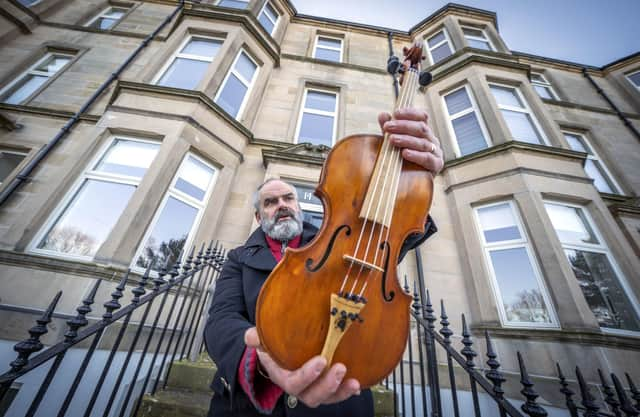Floorboards rescued from skip outside Shackleton’s home made into unique violin


The centenary of Shackleton’s death on Wednesday January 5 has been marked by Edinburgh-based luthier and nature conservationist Steve Burnett, who made the instrument from wood rescued during the refurbishment of the explorer’s former home in the capital, alongside driftwood found on a Scottish beach.
The three floorboards were salvaged from the skip outside the South Learmonth Gardens home where Shackleton used to live when he was the secretary of the Royal Scottish Geographical Society, between 1904 and 1910, just four years before he would go onto lead the ill-fated ship Endurance in the Antarctic.
Advertisement
Hide AdAdvertisement
Hide AdMr Burnett said he hoped the violin would not only be a musical celebration of Shackleton’s life and an inspiration to youngsters, but that it would “honour his fellow companions and their heroic achievements against adversity, especially at a time when humanity is now faced with such uncertainty in the journey ahead”.
He said he hoped the violin would be a “symbol of one of the most incredible journeys of survival in human history”.
“I just think with this centenary we have all got to reflect where humanity is now,” Mr Burnett said.
“This violin is also a time capsule and a message, through the power of music, and through the connection to Shackleton directly from the floorboards.”
Advertisement
Hide AdAdvertisement
Hide AdShackleton is regarded as one of the world’s great explorers. A fatal heart attack took his life on January 5 1922, while in South Georgia on what would become his final Antarctic expedition, at the age of 47.
But Shackleton, born in Ireland to Anglo-Irish parents, first embarked on a polar expedition in Captain Robert Scott’s Discovery Antarctic expedition, between 1901 and 1904, but was sent home early by Scott on health grounds.
During his second Antarctic expedition from 1907-1909, he and three companions established a new record, reaching 112 miles from the South Pole.
The Imperial Trans-Antarctic expedition of 1914 to 1917 was an attempt to make the first land crossing of the Antarctic continent.
Advertisement
Hide AdAdvertisement
Hide AdBut disaster struck Shackleton’s ship, Endurance, and he and his 27 fellow crew were in a battle against the odds in one of the most hostile remote regions on Earth.
“When you read more into that particular expedition, with Endurance, it’s just one of the most miraculous journeys,” Mr Burnett said. He added that thanks to the ingenious work of the crew, they all managed to survive.
“The fact is we are at a time, we all know now, if we don’t change our ways the whole planet going to be coming more and more hostile towards us and survival might be something we are all going to be faced with if we don’t watch it,” said the 57-year-old luthier.
Within the violin, which along with the floorboards is also made from driftwood found in East Lothian and wood from an ash tree, are inscribed the names of the 28 explorers aboard Endurance, alongside a poem written by Irish poet Mel McMahon.
Advertisement
Hide AdAdvertisement
Hide AdThe poem, titled Oratory, marks the centenary of Shackleton’s death, and pays homage to the crew aboard Endurance.
The men had become stranded after their ship was trapped and eventually crushed by pack ice in the Weddell Sea.
Comment Guidelines
National World encourages reader discussion on our stories. User feedback, insights and back-and-forth exchanges add a rich layer of context to reporting. Please review our Community Guidelines before commenting.